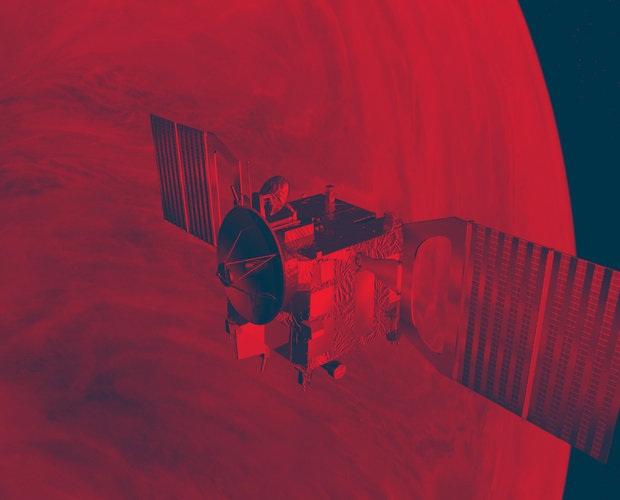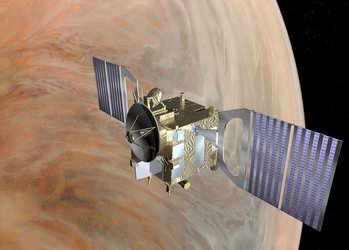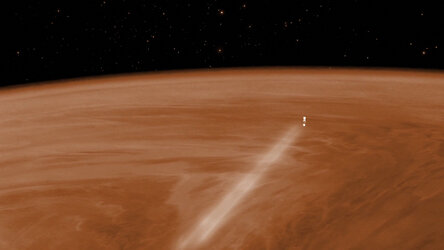Venus Express factsheet
Fast facts
Name: Venus Express
Mission: To perform a global investigation of the Venusian atmosphere
Launch date: 9 November 2005 from Baikonur, Kazakhstan
Launch vehicle: Soyuz-Fregat
Launch mass: 1270 kg (including 93 kg orbiter payload and 570 kg fuel)
Journey: 155 days (plus 5 days at Venus to manoeuvre into operational orbit)
Orbit: 24-hour near-polar elliptical orbit, from 250 km at the south pole to 66,000 km at the north pole
Dimensions: 1.5 x 1.8 x 1.4 m plus two solar arrays (with solar arrays extended, it measures about eight metres across).
Instruments: Venus Monitoring Camera (VMC); Analyser of Space Plasma and Energetic Atoms (ASPERA); Planetary Fourier Spectrometer (PFS); Visible/Ultraviolet/Near-infrared Mapping Spectrometer (VIRTIS); Venus Express Magnetometer (MAG); Venus Radio Science Experiment (VeRa); Ultraviolet and Infrared Atmospheric Spectrometer (SPICAV/SOIR);
Mission discoveries:
Click for more information on the mission’s important discoveries:
Shape-shifting polar vortices
Recent volcanism?
Spinning Venus is slowing down
Super-rotation is speeding up
Snow on Venus?
Ozone layer
Water loss
A magnetic surprise
Mission facts:
- Venus Express is ESA's first spacecraft to visit Venus
- The name Venus Express comes from the short time to define, prepare and launch the mission.
- It took less than three years from the approval to the launch of the mission.
- The spacecraft was built in only 33 months, compared with 48 months for Mars Express.
- Venus Express used the same design as the Mars Express mission and the same industrial teams that worked on that mission. It also borrowed instrument technology from Rosetta.
- The spacecraft’s 5.7 square metre solar arrays generate 1100 Watts of power at Venus
- The mission will conclude during 2014 when the spacecraft runs out of fuel and enters into the Venusian atmosphere







